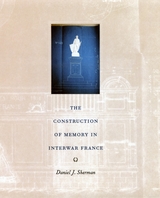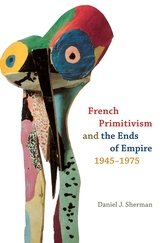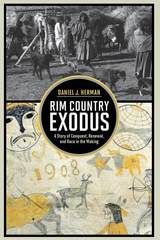
Sherman shows how a wartime visual culture saturated with images of ordinary foot soldiers, together with contemporary novels, memoirs, and tourist literature, promoted a distinctive notion of combat experience. The contrast between battlefield and home front, soldier and civilian was the basis for memory and collective gratitude. Postwar commemoration, however, also grew directly out of the long and agonized search for the remains of hundreds of thousands of missing soldiers, and the sometimes contentious debates over where to bury them. For this reason, the local monument, with its inscribed list of names and its functional resemblance to tombstones, emerged as the focal point of commemorative practice. Sherman traces every step in the process of monument building as he analyzes commemoration's competing goals—to pay tribute to the dead, to console the bereaved, and to incorporate mourners' individual memories into a larger political discourse.
Extensively illustrated, Sherman's study offers a visual record of a remarkable moment in the history of public art. It is at once a moving account of a culture haunted by war and a sophisticated analysis of the political stakes of memory in the twentieth century.
Winner of the 2000 J. Russell Major Prize of the American Historical Association

For over a century, the idea of primitivism has motivated artistic modernism. Focusing on the three decades after World War II, known in France as “les trentes glorieuses” despite the loss of most of the country’s colonial empire, this probing and expansive book argues that primitivism played a key role in a French society marked by both economic growth and political turmoil.

Contributors: Ludivine Bantigny, Françoise Blum, Tony Côme, Boris Gobille, Bethany Keenan, Salar Mohandesi, Donald Reid, Sandrine Sanos, Daniel Sherman

Winner Labriola Center American Indian National Book Award
For thousands of years, humans have lived on the sprawling escarpment in Arizona known as the Mogollon Rim, a stretch that separates the valleys of central Arizona from the mountains of the north. A vast portion of this dramatic landscape is the traditional home of the Dilzhe’e (Tonto Apache) and the Yavapai. Now Daniel Herman offers a compelling narrative of how—from 1864 to 1934—the Dilzhe’e and the Yavapai came to central Arizona, how they were conquered, how they were exiled, how they returned to their homeland, and how, through these events, they found renewal.
Herman examines the complex, contradictory, and very human relations between Indians, settlers, and Federal agents in late nineteenth- and early twentieth-century Arizona—a time that included Arizona’s brutal Indian wars. But while most tribal histories stay within the borders of the reservation, Herman also chronicles how Indians who left the reservation helped build a modern state with dams, hydroelectricity, roads, and bridges. With thoughtful detail and incisive analysis, Herman discusses the complex web of interactions between Apache, Yavapai, and Anglos that surround every aspect of the story.
Rim Country Exodus is part of a new movement in Western history emphasizing survival rather than disappearance. Just as important, this is one of the first in-depth studies of the West that examines race as it was lived. Race was formulated, Herman argues, not only through colonial and scientific discourses, but also through day-to-day interactions between Indians, agents, and settlers. Rim Country Exodus offers an important new perspective on the making of the West.

Attracting controversy as readily as they do crowds, art museums--the Grand Louvre project and the new Orsay in Paris, or the proposed Whitney and Guggenheim additions in New York, for example--occupy a curious but central position in world culture. Choosing the art museums of provincial France in the previous century as a paradigm, Daniel Sherman reaches toward an understanding of the museum's place in modern society by exploring its past. He uses an array of previously unstudied archival sources as evidence that the museum's emergence as an institution involved not only the intricacies of national policy but also the political dynamics and social fabric of the nineteenth-century city.
The author ascertains that while the French state played an important role in the creation of provincial museums during the Revolutionary era, for much of the next century it was content simply to send works of art to the provinces. When in the 1880s the new Republican regime began to devote more attention to the real purposes and functions of provincial museums, officials were surprised to learn that the initiative had already passed into the hands of local elites who had nurtured their own museums from their inception.
Sherman devotes particular attention to the museums of Bordeaux, Dijon, Marseilles, and Rouen. From their origins as repositories for objects confiscated during the Revolution, they began to attract the attention of local governments, which started to add objects purchased at regional art exhibitions. In the period 1860-1890, monumental buildings were constructed, and these museums became identified with the cities' bourgeois leaders. This central connection with local elites has continued to our own day, and leads into the author's stimulating reflections on the art museum's past, present, and future.
This original and highly readable account should attract those with an interest in cultural institutions and art history in general as well as those who study the history and sociology of modern France.
READERS
Browse our collection.
PUBLISHERS
See BiblioVault's publisher services.
STUDENT SERVICES
Files for college accessibility offices.
UChicago Accessibility Resources
home | accessibility | search | about | contact us
BiblioVault ® 2001 - 2024
The University of Chicago Press









